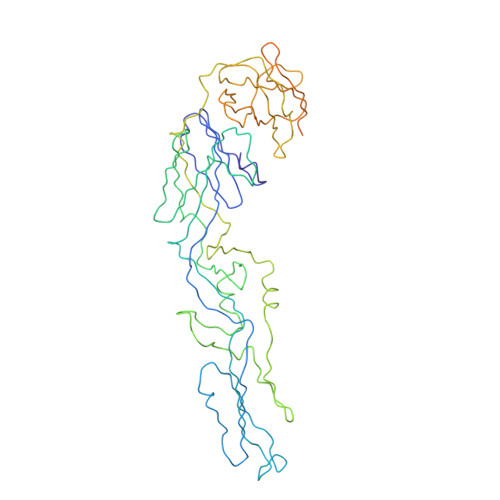Structural Changes of Dengue Virus When Exposed to 37 Degrees C.
Fibriansah, G., Ng, T.S., Kostyuchenko, V.A., Lee, J., Lee, S., Wang, J., Lok, S.M.(2013) J Virol 87: 7585
- PubMed: 23637405
- DOI: https://doi.org/10.1128/JVI.00757-13
- Primary Citation of Related Structures:
3ZKO - PubMed Abstract:
Previous binding studies of antibodies that recognized a partially or fully hidden epitope suggest that insect cell-derived dengue virus undergoes structural changes at an elevated temperature. This was confirmed by our cryo-electron microscopy images of dengue virus incubated at 37°C, where viruses change their surface from smooth to rough. Here we present the cryo-electron microscopy structures of dengue virus at 37°C. Image analysis showed four classes of particles. The three-dimensional (3D) map of one of these classes, representing half of the imaged virus population, shows that the E protein shell has expanded and there is a hole at the 3-fold vertices. Fitting E protein structures into the map suggests that all of the interdimeric and some intradimeric E protein interactions are weakened. The accessibility of some previously found cryptic epitopes on this class of particles is discussed.
- Program in Emerging Infectious Diseases, Duke-NUS Graduate Medical School, Singapore.
Organizational Affiliation:
















